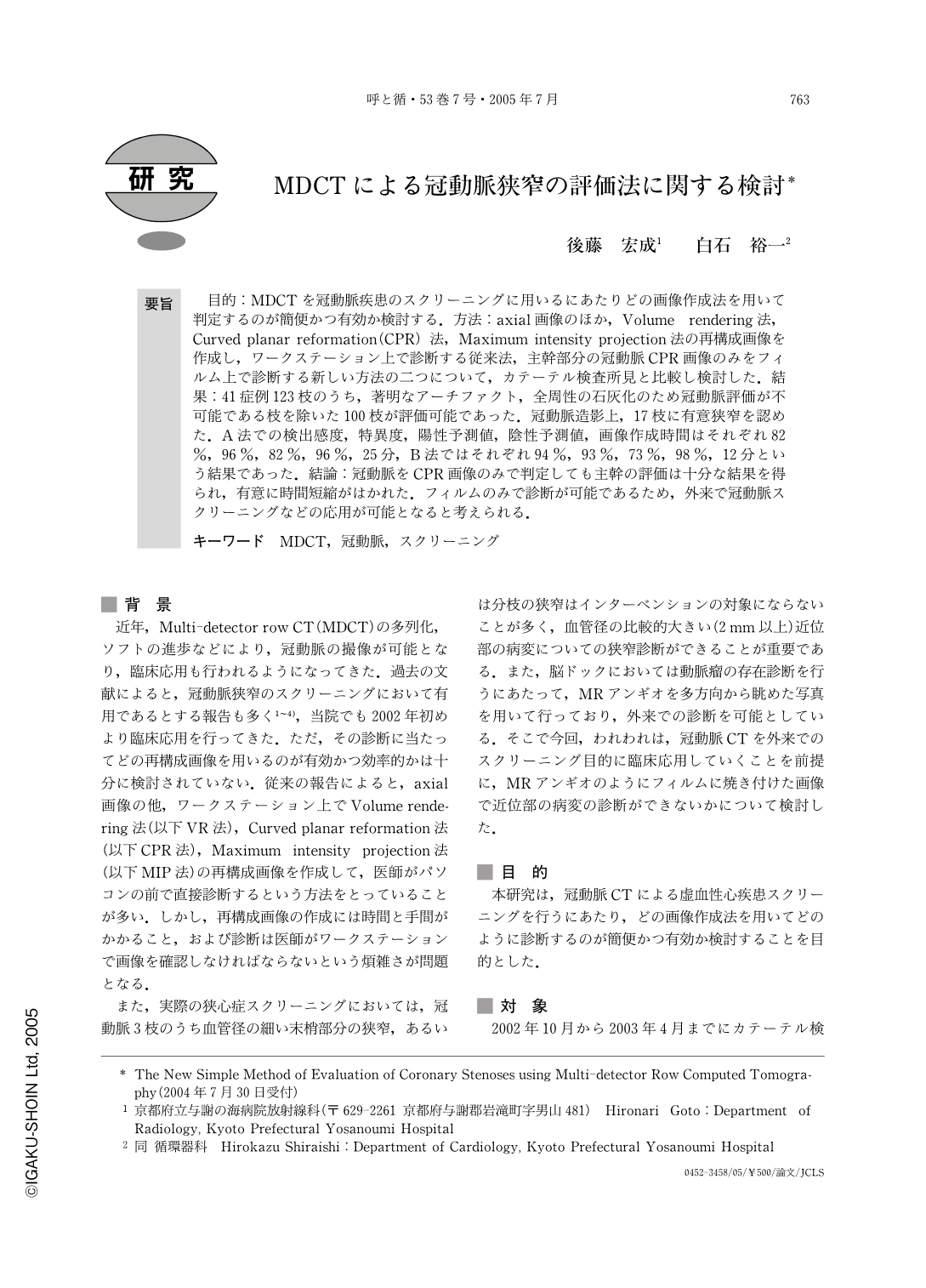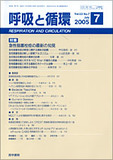Japanese
English
- 有料閲覧
- Abstract 文献概要
- 1ページ目 Look Inside
要旨 目的:MDCTを冠動脈疾患のスクリーニングに用いるにあたりどの画像作成法を用いて判定するのが簡便かつ有効か検討する.方法:axial画像のほか,Volume rendering法,Curved planar reformation(CPR) 法,Maximum intensity projection法の再構成画像を作成し,ワークステーション上で診断する従来法,主幹部分の冠動脈CPR画像のみをフィルム上で診断する新しい方法の二つについて,カテーテル検査所見と比較し検討した.結果:41症例123枝のうち,著明なアーチファクト,全周性の石灰化のため冠動脈評価が不可能である枝を除いた100枝が評価可能であった.冠動脈造影上,17枝に有意狭窄を認めた.A法での検出感度,特異度,陽性予測値,陰性予測値,画像作成時間はそれぞれ82%,96%,82%,96%,25分,B法ではそれぞれ94%,93%,73%,98%,12分という結果であった.結論:冠動脈をCPR画像のみで判定しても主幹の評価は十分な結果を得られ,有意に時間短縮がはかれた.フィルムのみで診断が可能であるため,外来で冠動脈スクリーニングなどの応用が可能となると考えられる.
Summary
Recent innovations in multi-detector row computed tomography(MDCT) have made it possible to visualize the coronary artery. In some institutions, MDCT has been already used for the screening of coronary stenoses. However, the evaluation of stenoses is often troublesome and time-consuming, because the method of evaluation is complicated and it is performed on workstation. The traditional method of evaluation is performed with multiple images of coronary, such as axial, volume rendering, curved planer reformation(CPR), and maximal intensity of projection. For this reason, for mass screening, a simpler method of evaluation is desirable to save time and labor. For the screening of coronary stenosis, evaluation a major branches is the most important. In this study, we tried to evaluate coronary stenoses using this new simple method. We diagnosed by only receiving film prints of CPR images of major coronary branches in clinical patients. We compared the sensitivity, specificity, positive predictive value, negative predictive value and time for diagnosis using the new method with corresponding factors using the traditional method. Of the 123 branches in 41 patients, 100 branches were eligible for image evaluation. In all these branches, there were 17 lesions with significant stenoses from the viewpoint of the conventional coronary angiography. The sensitivity and specificity were 93%, 98%, and 87%, 92%, respectively. Time for diagnosis was 25 min and 12 min, respectively. The drawback of the new method was that it cannot be applied in minor branches and the quality of the images varied according to the capability of technicians. However, the clinical results using the new method were not inferior to those using the traditional one and the former was clearly less complicated. For clinical use of MDCT for screening, the new method of evaluation was considered as useful.

Copyright © 2005, Igaku-Shoin Ltd. All rights reserved.


